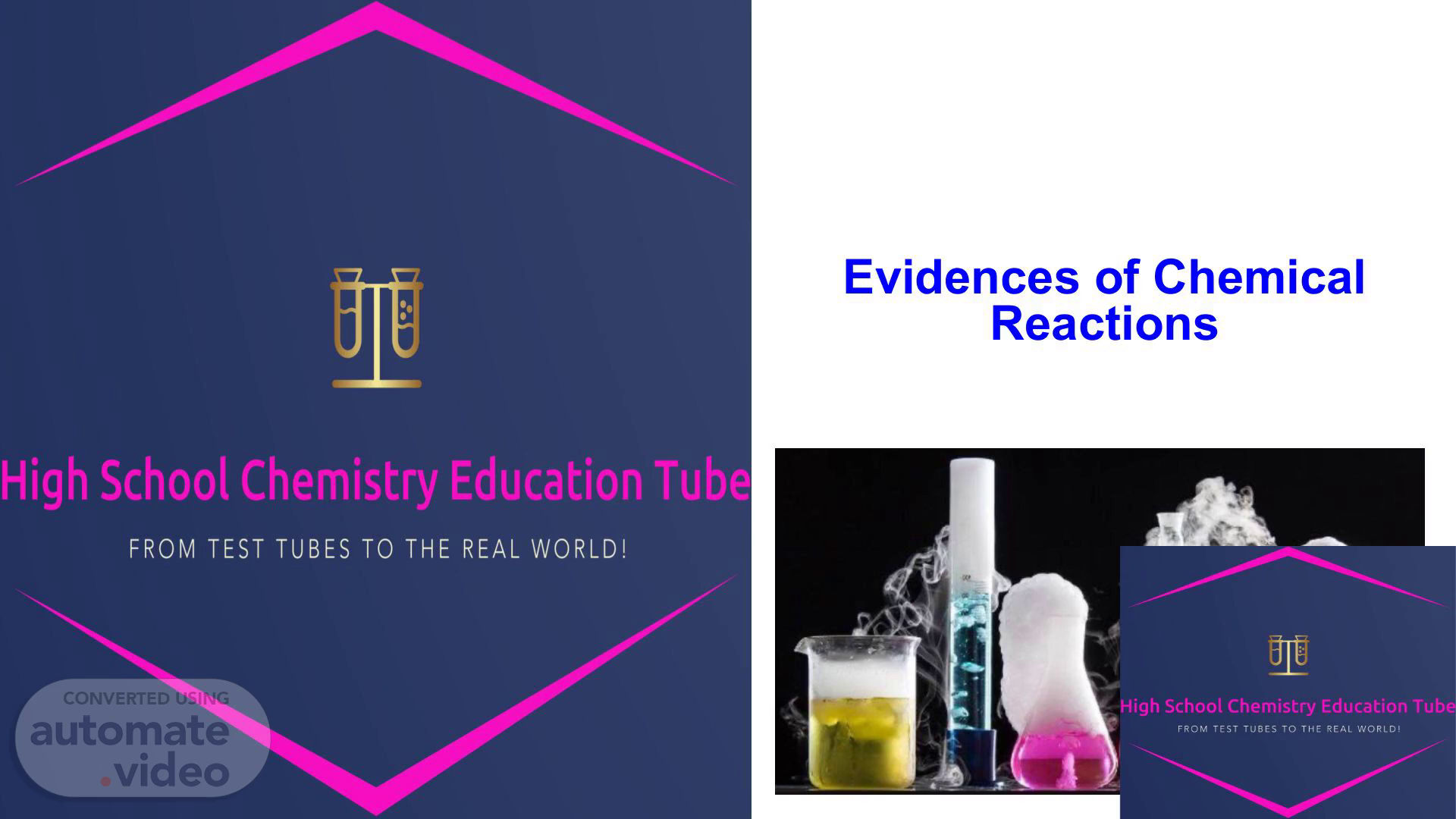Scene 1 (0s)
Evidences of Chemical Reactions. Evidences of Chemical Reactions.
Scene 2 (6s)
Chemical Reaction when two or more substances combine, the atoms are rearranged, and a new substance is created..
Scene 3 (14s)
DuringChemicalReactions. During Chemical Reactions.
Scene 4 (20s)
Chemical Change Examples In a chemical change, one or more substances form a new substance. Burning wood Digestion Rotting fruit Souring Milk Baking a cake Exploding Fireworks. Rusting metal Cooking an egg Using a Battery Photosynthesis.
Scene 5 (30s)
Gas formation Color change Energy change (light, heat) Chemical reaction indicators Precipitate formation Evidence of Chemical Reactions • Release of a gas • Example: bubbles formed when magnesium and hydrochloric acid were mixed • Color change • Example: color went from clear to yellowish orange when potassium iodide was added to hydrogen peroxide • Formation of a precipitate • Example: cloudiness occurred when C02 gas passed through limewater • Change in temperature, light, sound, smell • Example: temperature increased when hydrochloric acid and sodium carbonate were mixed.
Scene 6 (50s)
1. GasFormation. 1. Gas Formation.
Scene 7 (56s)
Gas formation • When different solutions are combined and "bubbles" are produced, we know a chemical reaction occurred!.
Scene 8 (1m 4s)
2.ColorFormation. 2. Color Formation.
Scene 9 (1m 10s)
+reaction teacßoo CHANGE IN COLOR Iron nail after some time CuS04 solution Fesoa Cu deposits on the iron nail solution By;us.com O min control 24 min 30 min 42 min 90 min.
Scene 10 (1m 19s)
Visual Clues for Recognizing Chemical Reactions Color Change Copper Sulfate (CuSO,j Iron (Fe) Fe + CuSQ , I Ill I II II I Ill I I I Iron Sulfate (CuS04) Copper (Cu).
Scene 11 (1m 29s)
3.FormationofPrecipitate(ppt). 3. Formation of Precipitate (ppt).
Scene 12 (1m 35s)
Formation of a precipitate 2 aqueous solutions mixing to produce a new compound that is insoluble (a solid).
Scene 13 (1m 43s)
PRECIPITATION REACTION 0 O 0 Solution Suspension Supermate Precipitate Formation of insoluble solid. Results in visible precipitate. Chemical reaction in solution. Common in chemical analysis. Combines ions in solution. Produces an insoluble substance. Used in compound purification. Regulation of ionic balance. Involved in water treatments. Results in a visible change..
Scene 14 (1m 59s)
A precipitate is a solid formed in a chemical reaction that is different from either of the reactants. This can occur when solutions containing ionic compounds are mixed and an insoluble product is formed. The identity of the precipitate can often be determined by examining solubility rules..
Scene 15 (2m 14s)
TwosolubleioniccompoundsreacttogetherforminsolubleproductItisDoubledisplacementreaction.
Scene 16 (2m 26s)
4. Temperature Change. 4. Temperature Change.
Scene 17 (2m 32s)
Summary.
Scene 18 (2m 37s)
Thank.
